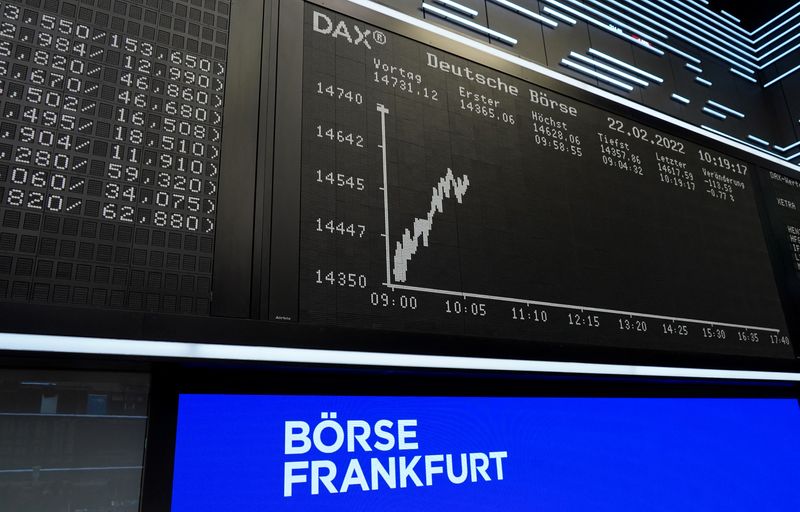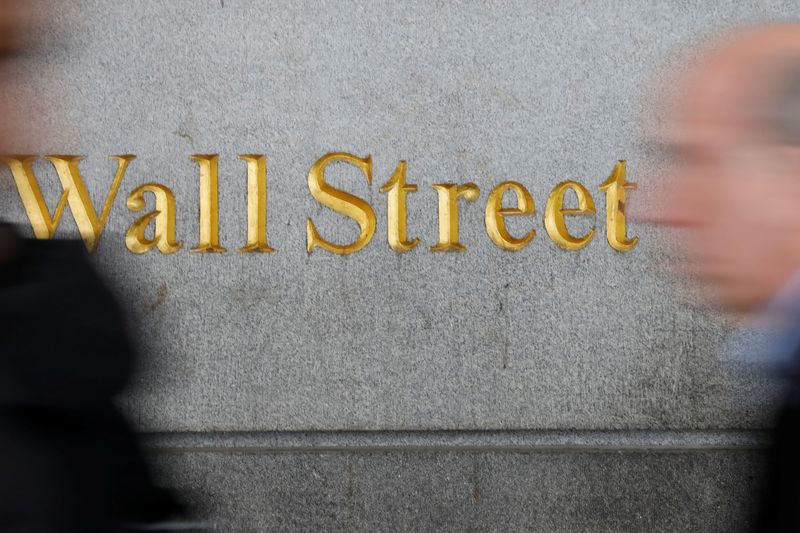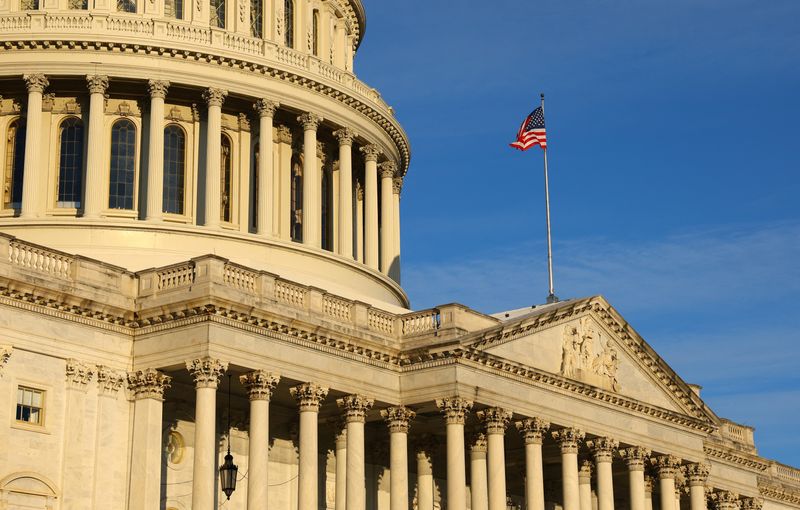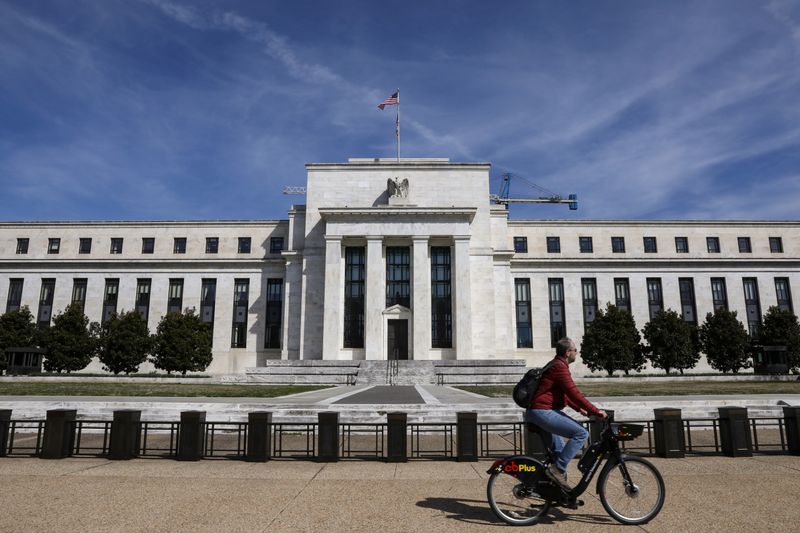Select Language

By Karen Braun
NAPERVILLE, Illinois (Reuters) - Relative to demand, world corn stocks later this year are predicted to hit 11-year lows.
But when considering corn supplies actually accessible to the global market, the milestone is closer to three decades.
On-and-off grain importer China has an extraordinary amount of corn in storage, more than five times that of the United States, the No. 2 corn stockpiler. As such, China is sometimes excluded from world grain balances to obtain a more realistic view of available supplies.
After subtracting China, estimates from the U.S. Department of Agriculture show 2024-25 world corn ending stocks at a 12-year low of about 87 million metric tons.
Supplies are even tighter when measured against demand. In 2024-25, world corn stocks-to-use sans China is pegged at 7.8%, the lowest ratio since 1995-96. That compares with a four-year average of 9.2% and a 20-year average of 11%.
Corn supplies in No. 2 exporter Brazil are predicted at the lowest levels in more than two decades, and Ukrainian and European Union stocks are the thinnest in over a decade. U.S. inventory is now seen as modest versus prior expectations for ample volumes.
Things are still somewhat snug even when adding back China. USDA’s figures imply full world corn stocks-to-use in 2024-25 at 20.3%, the lowest since 2013-14. That compares with a decade average of 24.6% and a low within that period of 22.2%.
Stocks-to-use throughout most of the 2000s and early 2010s was notably lower, usually below 15%. That might make the current situation appear a bit less extreme, but a glance at Chinese stocks perhaps explains the difference.
CHINA CONUNDRUM
In the mid-2000s, China accounted for around 30% of global corn ending stocks, though that surged in the early 2010s as the country incentivized increasing production.
China’s share of global corn stocks has been above 60% over the last decade, and according to USDA will reach a 28-year high of 70% in 2024-25.
In 2008, Beijing began a government corn stockpiling program, paying farmers above-market rates for their crops. This ended in 2016 amid sky-high costs for the government, which was keeping domestic prices well above global ones, unintentionally encouraging imports.
China has continued to subsidize corn farmers and output has grown even further, hence the large stockpiles.
Excluding China from global grain analyses might be controversial because the original premise lies in the country’s minimal involvement in global trade. Although it has backed off significantly this year, China has been the world’s No. 1 corn importer within the last five years.
However, China’s corn imports in the last few years have accounted for about 7% of its annual corn consumption, extremely light versus other top importers. Nearly 100% of Japan and South Korea’s corn use comes from imports, and Mexico’s rate has climbed above 50%.
This statistic plus China’s enormous share of world stocks defends the exclusion of China from global corn balance sheets, but its sometimes-importer status means that both calculations are worthwhile.
U.S. STOCKPILES
Corn stocks in the United States, the leading exporter, will be thinner than originally assumed. But the situation is not as rare as the global one.
USDA figures peg 2024-25 U.S. corn stocks-to-use at 10.2%, below the year-ago 11.8% and the decade average of 12.5% but slightly above the levels of the early 2020s.
In mid-2024, the 2024-25 ratio was forecast above 14%, but strong demand plus a smaller crop pared inventory. This helped propel large speculators into their currently massive bullish bets on Chicago corn futures.
However, corn bulls know that U.S. farmers are ready and willing to boost supplies by planting a potentially huge area this spring.
Although an inherently bearish force, plentiful corn supplies are what allow the United States to dominate the global export market and provide for customers like China, should it ever resume the interest.
Karen Braun is a market analyst for Reuters. Views expressed above are her own.

Investing.com - European stock markets mostly rose Thursday, with sentiment boosted by hopes that the war in Ukraine could end shortly, while investors digested UK growth data as well as a raft of corporate earnings.
At 03:05 ET (08:05 GMT), the DAX index in Germany gained 1.2% and the CAC 40 in France climbed 1%, while the FTSE 100 in the UK fell 0.4%.
End to Ukraine war?
The end of the war between Ukraine and Russia looks more likely after U.S. President Donald Trump held phone calls with both countries' leaders to discuss a potential peace deal.
Trump said that both Russian President Vladimir Putin and Ukrainian President Volodymyr Zelenskiy had expressed a desire for ending their long-running conflict in separate phone calls with him on Wednesday.
The U.S. President also said that he had ordered top officials to begin peace talks.
The move came after Defense Secretary Pete Hegseth said Ukraine would drop its bid to join NATO - which had been a major point of contention for Moscow.
UK economy grew in Q4
Data released earlier Thursday showed that Britain's economy unexpectedly grew by 0.1% in the final quarter of last year, belying expectations that gross domestic product would shrink by 0.1%.
GDP rose by 0.4% in December from November, much stronger than the 0.1% forecast and driven by stronger-than-expected 0.4% growth in the large services sector.
German inflation remained flat year-on-year in January at 2.8%, preliminary data from the federal statistics office showed on Friday, in line with a forecast.
Barclays reports rise in annual profit
There are more quarterly corporate earnings for investors to digest Thursday.
Barclays (LON:BARC) reported a 24% rise in annual pretax profit, slightly above expectations, as the lender’s investment bank reported strong performance for 2024 and slower than expected interest rate cuts sustained income in its domestic lending business.
Commerzbank (ETR:CBKG) reported strong results in 2024 on Thursday, with revenues growing 6.2% from the previous year, driven by heightened activity in securities trading and capital markets, with corporate clients contributing substantially to the uplift.
Unilever (LON:ULVR) reported underlying sales growth of 4%, slightly below expectations, and consumer goods giant said its ice cream business will be separated by way of demerger, through listing of the business in Amsterdam, London and New York.
Nestle (SIX:NESN) reported organic growth of 2.2% in 2024, a sharp decline from the 7.2% seen in 2023, reflecting a challenging macroeconomic environment and shifting consumer demand.
Thyssenkrupp (ETR:TKAG) raised its outlook for free cash flow, with the German industrial conglomerate citing advance payments for a major submarine order from the German military.
Crude falls on Ukraine peace hopes
Oil prices fell Thursday, on expectations that a potential peace deal between Ukraine and Russia would end sanctions that have disrupted supply flows.
By 03:05 ET, the US crude futures (WTI) slipped 1% to $70.66 a barrel, while the Brent contract fell 1% to $74.47 a barrel.
Both benchmarks fell more than 2% on Wednesday on raised hopes of a peace deal after President Trump spoke the presidents of both Russia and Ukraine.
Russia is the world's third-largest oil producer and sanctions imposed on its crude exports as a result of its invasion of Ukraine nearly three years ago have supported higher prices.
A build in crude oil inventories in the United States, the world's biggest crude consumer, also weighed on the market.

BANGKOK (Reuters) - Thai consumer confidence in January rose for a fourth consecutive month to the highest level in eight months, bolstered by government stimulus measures, tourism and exports, a survey showed on Thursday.
The consumer index of the University of the Thai Chamber of Commerce increased to 59.0 in January from 57.9 in December, the university said in a statement.
Consumers felt government stimulus was helping the economy and that tourism continued to improve, the university said.
"Consumers believe that the economy will recover in the future if the government continues to drive and stimulate the economy well and there are no additional risk factors, both internal and external risks," it said.
The government has said its "digital wallet" handout scheme and other measures will help spur the economy as it aims for 3.5% growth this year.
The handout scheme provides 10,000 baht ($300) each to an estimated 45 million people to spend in their localities within six months. So far about 17.5 million people have received payments since it started in September, with the next phase scheduled for the second quarter of this year.
Tourism, a key driver of the economy, saw a 17% year-on-year rise in foreign tourist arrivals to 4.8 million in the year up to February 9.
Exports, also a key growth driver, increased 5.4% to a record $301 billion last year.
($ 1= 33.83 baht)

Asian stocks rose on Thursday as an artificial intelligence-fueled rally in China and reports of dealmaking activity in Japan's technology sector helped offset headwinds from hot U.S. inflation data.
Broader technology stocks in Asia also rose amid persistent hopes that AI will continue to underpin the sector in the coming years.
Risk appetite was also aided by U.S. President Donald Trump talking up a peace treaty between Russia and Ukraine, which could mark an end to the three year-long conflict. Oil prices tumbled on this notion.
Regional markets mostly brushed off a middling lead-in from Wall Street, as U.S. stocks fell in overnight trade following stronger-than-expected consumer price index inflation data. The reading further dented expectations of lower interest rates.
But losses were limited by a batch of strong earnings, with U.S. stock index futures also rising in Asian trade.
Still, risk appetite remained skittish in the face of higher trade tariffs under U.S. President Donald Trump, who imposed steep tariffs on commodity imports this week and threatened to introduce reciprocal tariffs on major U.S. trading partners.
China tech rally powers on amid AI hype
China’s Shanghai Shenzhen CSI 300 and Shanghai Composite indexes rose slightly on Thursday, while Hong Kong’s Hang Seng index jumped 1.1% to a four-month high.
Chinese markets are trading up between 5% and 15% since mid-January, with gains linked entirely to increased optimism over the country’s AI capabilities. This trend was sparked by the release of DeepSeek R1 in late-January.
UBS analysts said the stock rally still had legs, at least based on historical, thematic rallies in Chinese markets. They added that Chinese markets were less than halfway through their ongoing rally.
Still, barring tech and AI-related sectors, sentiment towards broader Chinese markets was less upbeat, especially in the face of a brewing trade war with the U.S.
Trump had last week imposed 10% tariffs on China, drawing ire and retaliation from Beijing.
Japanese stocks rise on weak yen, tech M&A
Japan’s Nikkei 225 index jumped 1.2%, while the TOPIX index added 0.9%.
Gains were driven chiefly by export-oriented stocks, which rose tracking a sharp drop in the yen this week. The USD/JPY pair rose sharply from two-month lows hit earlier in February, even as Japanese producer price index inflation data read stronger than expected in January.
Cybersecurity firm Trend Micro (OTC:TMICY) Inc. (TYO:4704) was the best performer on the Nikkei, rallying over 16% after Reuters reported that the firm was subject to a bidding war between several private equity giants, including Bain Capital, Advent International, and EQT (ST:EQTAB).
Broader Asian markets were mostly higher, although investors were still bracing for higher-for-longer U.S. interest rates amid sticky inflation. Federal Reserve Chair Jerome Powell also reiterated this trend during a Congressional testimony this week.
Australia’s ASX 200 rose 0.2%, while Singapore’s Straits Times index fell 0.2%.
South Korea's KOSPI jumped 0.9% on strength in chipmaking stocks, which have some exposure to China’s AI boom.
Futures for India’s Nifty 50 index pointed to a mildly positive open, although the Nifty was nursing six straight sessions of losses amid worsening sentiment towards India. The threat of increased U.S. tariffs against India also weighed on local stocks.

By Noel Randewich and Shashwat Chauhan
(Reuters) - The S&P 500 ended down on Wednesday after a hotter-than-expected U.S. inflation reading added to worries that the Federal Reserve would not cut interest rates anytime soon, while CVS Health (NYSE:CVS) and Gilead Sciences (NASDAQ:GILD) rallied after upbeat quarterly reports.
Nvidia (NASDAQ:NVDA) and Amazon (NASDAQ:AMZN) dipped more than 1%, with the two AI computing heavyweights weighing on the S&P 500.
U.S. consumer prices increased in January by the most in nearly a year and a half, reinforcing the Fed's message that it was in no rush to resume cutting rates.
The surge in prices offered a cautionary note to President Donald Trump's push for tariffs on imported goods, which economists have panned as inflationary.
Interest rate futures now suggest traders see about a 70% chance the Fed will reduce rates by another 25 basis points by the end of 2025, down from about an 80% chance on Tuesday, according to CME Fedwatch.
"The market is digesting that the Fed may not cut at all. That's why the stock market is down, said Jake Dollarhide, CEO of Longbow Asset Management in Tulsa, Oklahoma.
The S&P 500 declined 0.27% to end the session at 6,051.97 points.
The Nasdaq gained 0.03% to 19,649.95 points, while the Dow Jones Industrial Average declined 0.50% to 44,368.56 points.
Of the 11 S&P 500 sector indexes, nine declined, led lower by energy, down 2.69%, followed by a 0.91% loss in real estate.
CVS Health surged 15% after the healthcare conglomerate beat fourth-quarter profit estimates, hinting at improved performance under new CEO David Joyner.

By Lucia Mutikani
WASHINGTON (Reuters) -U.S. consumer prices increased by the most in nearly 1-1/2 years in January, with Americans facing higher costs for a range of goods and services, reinforcing the Federal Reserve's message that it was in no rush to resume cutting interest rates amid growing uncertainty over the economy.
The hotter-than-expected inflation reported by the Labor Department on Wednesday was likely partly due to businesses raising prices at the start of the year, evident in a record surge in the cost of prescription medication and an increase in motor vehicle insurance.
The report followed a pattern of CPI numbers overshooting expectations every January, which some economists said suggested that the seasonal adjustment factors, the model used by the government to strip out seasonal fluctuations from the data, were not fully accounting for the one-off turn-of-year price hikes.
Nonetheless, they said the so-called residual seasonality was not responsible for all of the broad rise in prices, which offered a cautionary note to President Donald Trump's push for tariffs on imported goods that have been panned by economists as inflationary.
Trump was elected on promises to lower prices for inflation-weary consumers. High inflation could imperil the Trump administration's agenda, including tax cuts, which could overstimulate a healthy economy, and mass deportations of undocumented immigrants that are seen causing labor shortages and raising costs such as wages for businesses.
"The moderation we saw in consumer inflation last summer is no longer visible now," said Scott Anderson, chief U.S. economist at BMO Capital Markets. "The problem for the Fed is this isn't just a one-month event, but looks like a real multi-month firming of inflation pressures."
The consumer price index jumped 0.5% last month, the biggest gain since August 2023, after rising 0.4% in December, the Labor Department's Bureau of Labor Statistics (BLS) said.
Shelter, which includes hotels and motel rooms, increased 0.4% and accounted for nearly 30% of the rise in the CPI. That followed two straight monthly gains of 0.3%.
Food prices rose 0.4% after increasing 0.3% in December. Grocery store prices surged 0.5%, with the cost of eggs soaring 15.2%, the largest increase since June 2015. That accounted for about two-thirds of the rise in prices at the supermarket.
An avian flu outbreak has caused a shortage of eggs, driving up prices. Egg prices, which fueled much of the voter discontent with inflation, increased 53.0% year-on-year in January.
Prices also rose for meats, poultry and fish as well as for nonalcoholic beverages and dairy products. Fruits and vegetable prices fell by the most in nearly two years. Gasoline prices increased 1.8% while natural gas cost 1.8% more, but electricity prices were unchanged.
In the 12 months through January, the CPI increased 3.0%. That was the biggest gain since June 2024 and followed a 2.9% advance in December. Economists polled by Reuters had forecast the CPI gaining 0.3% and rising 2.9% year-on-year.
The BLS updated CPI weights and seasonal adjustment factors to reflect price movements in 2024. Economists had expected the updated seasonal factors to temper the rise in the CPI.
Businesses could also have preemptively raised prices in anticipation of higher and broad tariffs on imported goods.
Trump early this month suspended a highly telegraphed 25% tariff on goods from Canada and Mexico until March. But a 10% additional tariff on Chinese goods went into effect this month. Economists expect that those tariffs, when they are eventually enforced, will lift inflation.
Fed Chair Jerome Powell appearing before lawmakers for a second day on Wednesday said the CPI report highlighted that the central bank was "not quite there yet" in its quest to bring inflation back to its 2% target.
Stocks on Wall Street slumped. The dollar eased versus a basket of currencies. U.S. Treasury yields rose.
RATE CUT HOPES DIMINISHING
Chances of a rate cut this year are diminishing. Consumers' one-year inflation expectations surged to a 15-month high in early February as households perceived that "it may be too late to avoid the negative impact of tariff policy," a University of Michigan survey of consumers showed last week.
Higher inflation, together with a stable labor market, has some economists believing the Fed's easing cycle is over.
The Fed left its benchmark overnight interest rate unchanged in the 4.25%-4.50% range in January, having reduced it by 100 basis points since September, when it embarked on its policy easing cycle. The policy rate was hiked by 5.25 percentage points in 2022 and 2023 to tame inflation.
Excluding the volatile food and energy components, the CPI climbed 0.4% in January. The so-called core CPI increased 0.2% in December. Residual seasonality has tended to be more pronounced in the core CPI.

By Jeff Mason and Steve Holland
WASHINGTON (Reuters) -President Donald Trump ordered U.S. agencies on Tuesday to work closely with top adviser Elon Musk's effort to shrink the federal workforce by identifying government employees who can be laid off and functions that can be eliminated entirely.
With his 4-year-old son by his side or on his shoulders, billionaire Musk stood next to Trump in the Oval Office at the White House before the order was signed, taking questions from reporters and making it clear that he was leading efforts to cut what he saw as government waste at Trump's behest.
Wearing a "Make America Great Again" cap, the world's richest man defended his role as an unelected official who has been granted unprecedented authority by the president to dismantle parts of the U.S. government.
"You can't have an autonomous federal bureaucracy. You have to have one that's responsive to the people," Musk said. He called the bureaucracy an "unconstitutional" fourth branch of government that in a lot of ways had "more power than any elected representative."
Musk, the Tesla (NASDAQ:TSLA) CEO and owner of X, pushed back at criticism that he and his Department of Government Efficiency team have operated largely in secrecy.
DOGE has provided no information on whom it employs, where it is operating or what actions it is taking inside government agencies. It posts few actual results from its work, providing only dollar figures for purported cuts in specific agencies and little specific detail.
Musk has also aimed his ire at judges who have issued rulings that paused Trump's executive actions. "Democracy in America is being destroyed by judicial coup," Musk wrote in a separate post on Tuesday.
Trump voiced a similar complaint during his meeting with Musk in the Oval Office.
"We want to weed out the corruption. And it seems hard to believe that a judge could say, we don't want you to do that," he said. "So maybe we have to look at the judges, because that's very serious. I think it's a very serious violation."
Trump said he would follow court orders.
"I always abide by the courts, and then I'll have to appeal it," Trump said. "Then what ... he's done is he’s slowed down the momentum, and it gives crooked people more time to cover up the books."

Investing.com-- Most Asian stocks rose on Wednesday, led by a rally in Hong Kong’s tech sector amid growing AI optimism, while gains across other regional indices remained subdued ahead of a key U.S. inflation report.
U.S. stock index futures held steady during Asian trading hours as investors assessed Federal Reserve Chair Jerome Powell’s remarks on interest rates ahead of key inflation data due later in the day.
Hong Kong stocks jump 2% as tech, EV stocks gain
Hong Kong’s Hang Seng index rose more than 2% on Wednesday, sharply higher than other regional stock indices as Chinese tech, and electric vehicle (EV) stocks surged amid AI hype.
Hong Kong-listed Alibaba (NYSE:BABA) Group (HK:9988) shares jumped more than 8% to hit a four-month high on reports of a strategic partnership with Apple Inc (NASDAQ:AAPL) to develop artificial intelligence (AI) features for iPhones in China.
EV manufacturer BYD Co (HK:1211) shares climbed 5.5% after reaching a record high on Tuesday, when the company announced plans to equip its models with advanced driver-assistance systems.
Other Hong Kong-listed Chinese tech stocks were buoyed by optimism around domestic AI breakthroughs from DeepSeek.
Tencent Holdings Ltd (HK:0700) shares gained 2.2%, while Xiaomi (OTC:XIACF) Corp (HK:1810) stock advanced 4% to a fresh record high level of HK$44.55 on Wednesday.
In mainland China, the Shanghai Composite index inched 0.2% higher, while the Shanghai Shenzhen CSI 300 index was largely unchanged.
US inflation, interest rate jitters cap gains
Asian markets traded cautiously as investors awaited the release of U.S. consumer inflation data, which is expected to offer fresh clues on the Fed’s interest rate trajectory.

By Jihoon Lee
SEOUL (Reuters) - South Korea's acting President Choi Sang-mok on Wednesday said he hoped for a swift agreement within the country's parliament on an extra budget to support an economy struggling with slowing domestic demand and heightened external uncertainty.
"I hope that parliament reaches an agreement on the basic principles regarding the supplementary budget as soon as possible," said Choi, the country's finance minister who is serving as acting president.
On Tuesday, the floor leader of the ruling People Power Party, Kweon Seong-dong, said that the party was not opposed to discussing an extra budget. His comment came a day after the leader of the opposition Democratic Party proposed an extra budget of at least 30 trillion won ($20.65 billion).
Asia's fourth-largest economy barely grew in the fourth quarter of 2024, as the country's worst political crisis in decades hurt already weakened domestic demand and threatened to further sap growth in a year of rising external risks under the second Donald Trump presidency.
There have been growing calls among economists and even from the central bank governor that the government draft a supplementary budget to support the economy. South Korea's economic growth is expected to slow to 1.6% or 1.7% this year, from 2.0% last year, according to the Bank of Korea.
Choi also said the government would respond preemptively to any domestic impact from U.S. tariffs by preparing support measures for domestic firms and seeking to diversify export markets.
The government will strengthen support for the biopharmaceutical sector and assist domestic firms to connect with manufacturing facilities in the United States, Choi said, after U.S. President Trump said the sector was also under consideration for tariffs.
($1 = 1,452.5800 won)

(Reuters) -U.S. central bankers paused interest-rate cuts at their January 28-29 meeting, noting bumpy progress toward their 2% inflation goal, a still-strong labor market, and a lot of uncertainty over tariffs, tax cuts, and other economic policies under President Donald Trump.
Here is a look at their comments since then, sorting them under the labels "dove" and "hawk" as shorthand for their monetary policy leanings. A dove is more focused on risks to the labor market and may want to cut rates more quickly, while a hawk is more focused on the threat of inflation and may be more cautious about rate cuts.
The designations are based on comments and published remarks; for more, click on the photos in this graphic. For a breakdown of how Reuters' counts in each category have changed, please scroll to the bottom of this story.
Dove Dovish Centrist Hawkish Hawk
Christopher Jerome Powell, Michelle Bowman,
Waller, Governor, Fed Chair, Governor,
permanent voter: permanent permanent voter:
No public voter: "We do "I continue to
comments on not need to be see upside risks
monetary policy in a hurry to to inflation….I
since Jan 2025. adjust our continue to
policy stance." prefer a cautious
Feb 11, 2025 and gradual
approach to
adjusting
policy.” Jan 31,
2025
Lisa Cook, John Williams,
Governor, New York Fed Jeffrey Schmid,
permanent voter: President, Kansas City Fed
No public permanent President, 2025
comments on voter: No voter: No public
monetary policy public comments comments on
since Jan 2025. on monetary monetary policy
policy since since
Jan 2025. Jan
2025.
Austan Goolsbee, Philip Alberto Musalem,
Chicago Fed Jefferson, Vice St. Louis Fed
President, 2025 Chair, President, 2025
voter: "I think permanent voter: No public
we're on path voter: “We can comments on
back to 2% on the be patient and monetary policy
inflation wait to see the since Jan 2025.
side…And as that net effect of
inflation comes any policy
down, we can changes by the
commensurately be current
cutting the administration.
interest rate." ” Feb 5, 2025
Feb 7, 2025
Michael Barr, Beth Hammack,
Vice Chair of Cleveland Fed
Supervision, President, 2026
permanent voter: "Given
voter: No current economic
public comments conditions, it
on monetary will likely be
policy since appropriate to
May 2024. hold the funds
rate steady for
some time.” Feb
11, 2025
Adriana Kugler, Lorie Logan,
Governor, Dallas Fed
permanent President, 2026
voter: “The voter: “If
prudent step is inflation comes
to hold the in close to 2% in
federal funds coming months…it
rate where it wouldn’t
is for some necessarily allow
time." Feb 7, the FOMC to cut
2025 rates soon.” Feb
6, 2025
Susan Collins, Neel Kashkari,
Boston Fed Minneapolis Fed
President, 2025 President, 2026
voter: "It's voter: "We're in
really a very good place
appropriate for to just sit here
policy to be until we get a
patient, lot more
careful, and information on
there's no the tariff front,
urgency for on the
making immigration
additional front, on the tax
adjustments." front, etc.” Feb
Feb 3, 2025 7, 2025
Patrick Harker, Thomas Barkin,
Philadelphia Richmond Fed
Fed President, President, 2027
2026 voter: No voter: "I start
public comments with a baseline
on monetary that is pretty
policy since favorable (to
Jan 2025. further
interest-rate
cuts)....That is
certainly the
lean." Feb 5,
2025
Raphael Bostic,
Atlanta Fed
President, 2027
voter: ”There
are a lot of
things I am
going to wait
and see about
... I'd be very
satisfied to
wait for a
while.” Feb 3,
2025
Mary Daly, San
Francisco Fed
President, 2027
voter:
“Uncertainty is
not paralysis.
It just means
you have to
watch and be
careful and
thoughtful as
you navigate
the information
we have.” Feb
4, 2025
Notes: The current policy rate target range is 4.25%-4.50%. As of December, Fed policymakers projected half of a percentage point of rate cuts this year, less than in 2024; they next publish projections at their March 18-19 meeting.
The seven Fed governors, including the Fed chief and vice chairs, have permanent votes at the Federal Open Market Committee meetings, which are held eight times a year. All 12 regional Fed presidents discuss and debate monetary policy at the meetings, but only five cast votes, including the New York Fed president and four others who vote for one year at a time on a rotating schedule.
Reuters over time has shifted policymaker designations based on fresh comments and developing circumstances. Below is a Reuters count of policymakers in each category, heading into recent Fed meetings.
FOMC Date Dove Dovish Centrist Hawkish Hawk
Jan. '25 0 3 9 7 0
Dec. '24 0 2 10 7 0
Nov. '24 0 0 13 5 0
Sept '24 0 1 12 5 0
May through July '24 0 1 10 6 1
March '24 0 1 11 5 1
Jan '24 0 2 9 4 1
Dec '23 0 2 9 4 1
Oct/Nov '23 0 2 7 5 2
Sept '23 0 4 3 6 3
June '23 0 3 3 8 3
March '23 0 2 3 10 2
Dec '22 0 4 1 12 2

